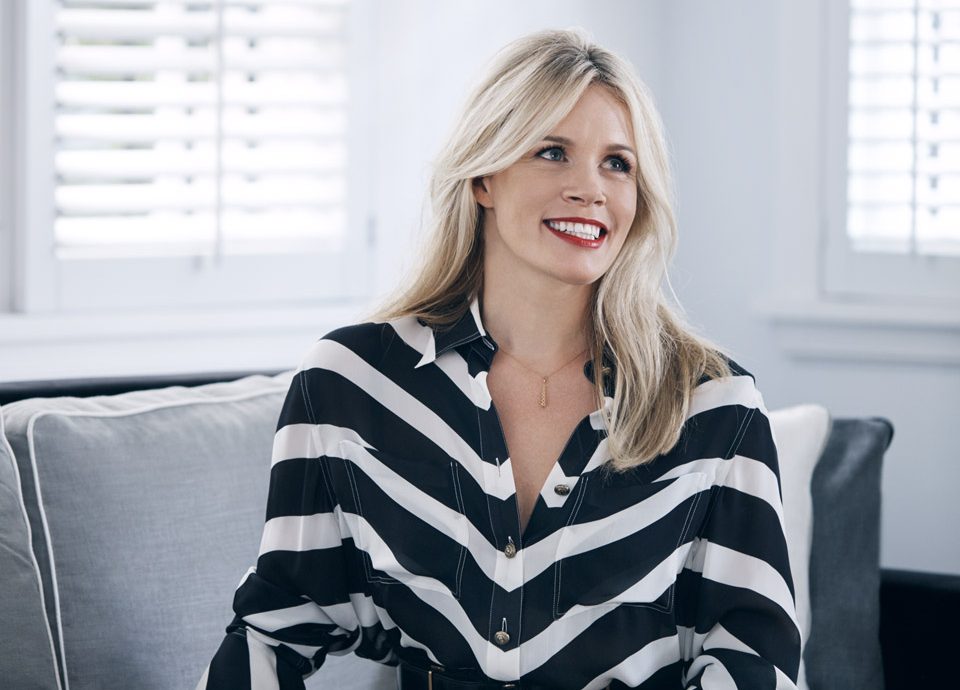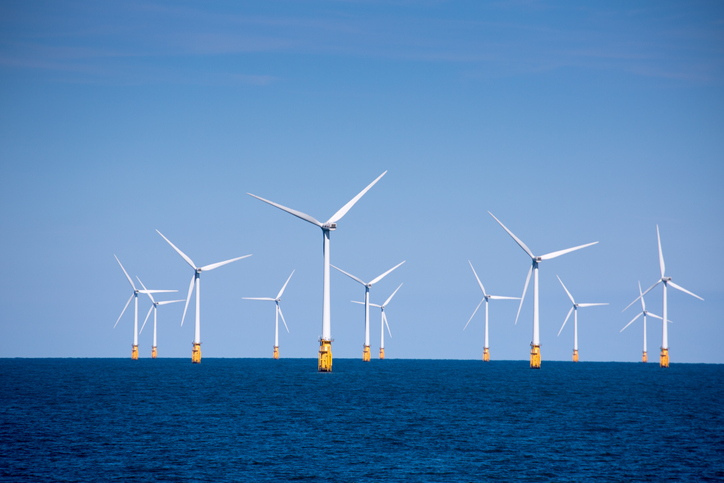Interview: Blainey North, Architect / Interior Designer
Post-COVID interiors and why trends are little more than “background noise.”
Blainey North’s surname fits well – the ebullient Sydneysider and enviable multitasker on an upward trajectory like few others.
Architect, interior and industrial designer, entrepreneur, business leader and firm Australian success story, North is a standout, having launched her eponymous studio at 21 and pushed hard to achieve ever since.
It’s meant working across a swathe of differing projects, from luxury Australian residences to hotels (Crown Towers and Metropol but two), megayachts (the 54m Mischief), restaurants (Bistro Guillaume) to the world’s tallest residential tower (New York’s Central Park Tower) and more.
We caught up to talk Bladerunner, ‘Zoom walls’ and gender neutrality in design.
Kanebridge News: So much of your work is framed by a sense of architectural allure – which perhaps isn’t surprising as this was your chosen field of study, right?
Blainey North: Yes, I studied architecture and always approach our projects with an eye focusing on the built elements before I even look at the interior decoration. I believe interiors should be crafted with the walls, ceilings and floors becoming part of the consideration in shaping the idea.
KN: Does having such greatly assist in your design process and also your industrial design work with the various Blainey North Collection pieces?
BN: The rigour in designing a piece of furniture is the same as that of a building, it’s just a set of entirely different problems to solve. I love the freedom of designing the furniture and lighting pieces as they are like beautiful little jewels that I can design without any client in mind. It’s a lovely artistic outlet for me. The latest collection, titled Man and the Machine was inspired by my deep fascination with the city and a bodies movement through it. It was almost an indulgence to be able to think and craft pieces based on a particular area of my interest.
KN: It’s arguably strange that more interior designers don’t produce their own pieces – what do you see as the main barriers to overcome here?
BN: To produce and manufacture something is far more involved than anyone would imagine. The design part is actually only a small fraction of what is required as the process of trial and error in prototyping, finding the right people to build it with you, the cost and the labour are all enormous factors in being able to produce a product of excellent quality. That’s all before you have a sale. I’m incredibly proud of our furniture and lighting collection, however it is a very distinct business to the interiors.
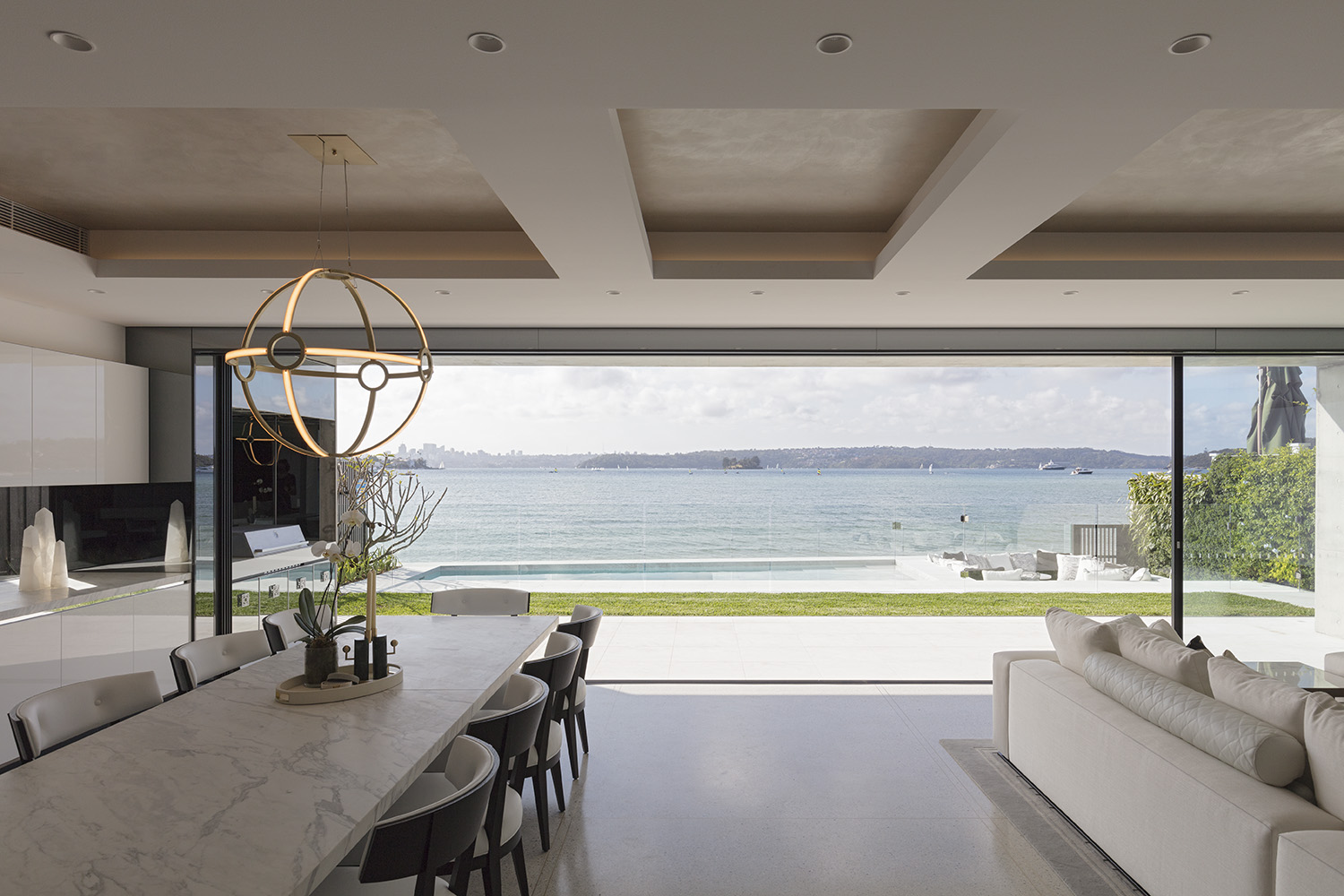
KN: How has COVID impacted or brought change to the way you approach (indeed, clients are wanting you to approach) certain aspects of residential interiors and spaces?
BN: People are again ‘living’ in their homes. By that I mean, they’re entertaining and spending time in and about the house. It’s similar to the1800’s in that respect, and so too there’s a desire for a similar traditional house layout — where the kitchen and the ‘working”’ parts of a house are separated from the entertaining. And so we’re designing homes again with butlers pantries and stand alone kitchens, formal dining rooms, formal lounge areas. It’s a return to the past… Oh, and we’re also being asked to design specific walls for people’s Zoom background, which is quite fun.
KN: Is there a preference when it comes to interiors — in regards to residential over, say, large scale ‘commercial’ efforts?
BN: I absolutely love working at a large scale – there’s a rush about building something that’s so much larger than you. We’re interestingly seeing a trend where homes and apartments are becoming far bigger, in both Australia and the rest of the world. Many of the homes and apartments we’re working on are over 2000sqm internal… Frankly, though, I love all forms of design and select the projects we take on based on whether I feel inspired by the brief and have a nice synergy with the client.
KN: I recall a want to make every project ‘magazine worthy’ — can you explain this philosophy?
BN: Many design firms work on a model of designing a large number of projects with simple design and then take on a few special projects that they put extra time and energy into ( they might make a loss on these). My dream was to create a business where the everyday design process in the studio was so rigorous that every project was a project you were proud to show. It’s been a huge decision as it’s meant that financially you take a long term vision. However, right now, 20 years in, it’s meant we have a large body of work that we can stand behind and have so many repeat clients that we’ve worked with for over 15 years now.
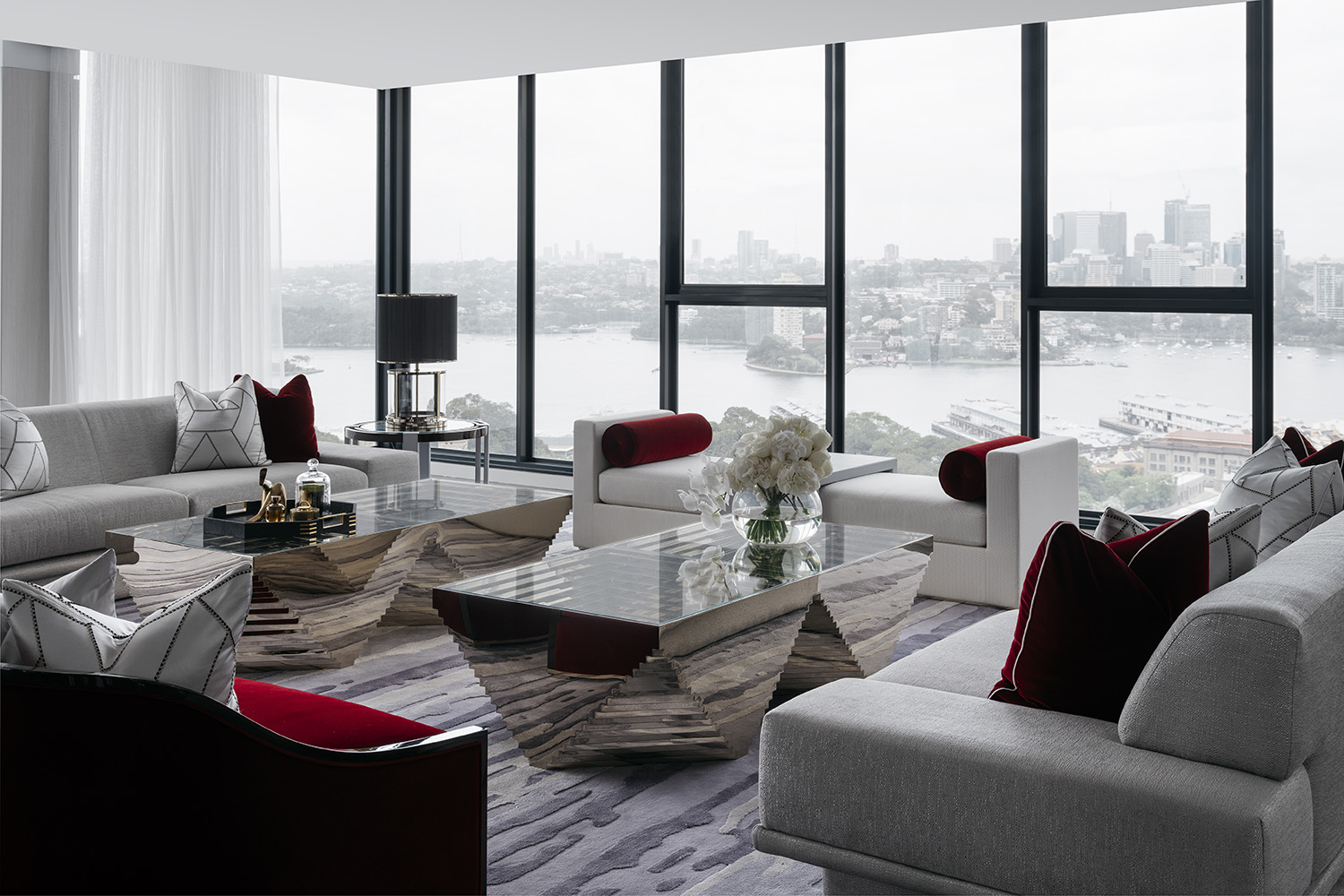
KN: You don’t present, through your work and also on a personal level, as someone who necessarily follows or adheres to trends. Fair to say there’s a Blainey North narrative and that’s your focus?
BN: I do spend a lot of time researching and looking at what is current and new, however I’ve always been a lone wolf. Emulating trends in design is just background noise in my opinion. I believe that original design comes from a different place and a unique process, something we like to work with the client on. I like to think of every project being a grand scale couture dress – it’s designed and made just for you.
KN: If you did have to target some likely design trends to appear this year and across 2022 – what can people expect?
BN: Detail and craft – it’s like the 1920’s all over again. The world is coming out of a period of minimalism and great pain and we’re ready to celebrate again and see beauty in all aspects of our life. I think that will mean that creativity will flourish in all areas of the arts with a specific focus on our interior spaces, the ones we have spent so much of the year inhabiting. It’s an incredibly exciting time to be in my field.
KN: In regards to your aesthetics there’s often a sense of moody and arguable masculinity to some of the work — fair summation?
BN: I’ve always found this idea of gender based aesthetic so curious, I mean, what does it mean to have a male or female aesthetic? If it’s floral and curved should that mean it’s feminine? I can say that I attempt to be original in detail and concept in each of our projects, and bring that rigour to the detail as well. I think it’s that attention to detail and alignment that is similar to the principles of Art Deco.
KN: Where do you find inspiration — is much of it delivered, simply, by the everyday and all that surrounds you in Sydney?
BN: I’m usually researching something in my spare time — for example, I’m currently interested in the direction of Kris Van Assche, the creative director of Berluti. In his latest collection he’s been fusing the art of a particular ceramicist and morphing it into fashion in a way I haven’t seen before. It’s started me thinking about how I might use this same technique and apply it to our architecture and interiors. I’m sure that our next project will have some of this inspiration coming from the art world.
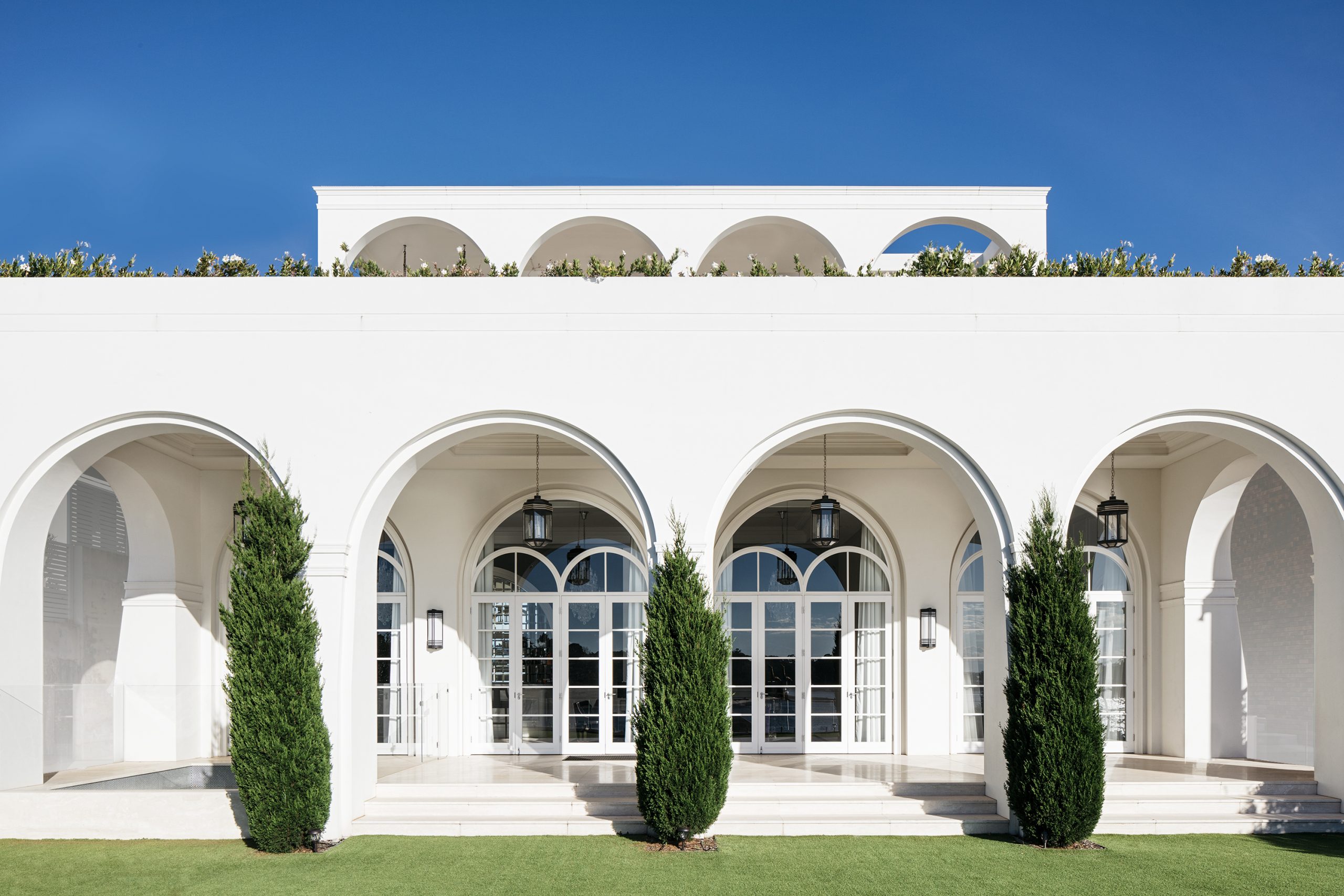
KN: Are Australians — generally speaking — becoming braver and bolder with their approach to interior and architectural design?
BN: I think there is a new appreciation for design as a whole. Australia has now seen that good design might be more expensive in the short term, but it can deliver financially in the long term. That means that the developers are enthusiastic about building good design and understand that can relate to better sales and longevity in the product.
KN: Do you feel international markets are increasingly looking enviously at the contemporary design aesthetics we’ve developed here — especially in relation to open interiors, use of light, airiness and so on?
BN: Absolutely, we have such a unique set of criteria here with intense light and an amazing climate, we’ve developed amazing solutions to the indoor/ outdoor transition.
KN: Crown Spa Sydney is a recent project of yours – can you talk us through the concept here and what you were wanting to achieve. And your take on the Chris Wilkinson-designed building itself, from an architectural standpoint?
BN: We wanted the spa to feel like the moment you start drifting off to sleep, that space between sleeping and waking where your peripheral vision blurs. I think that’s one of the most beautiful and relaxing moments in a day, when the mind stops before it goes into a dream state. The design is full of curves and semi transparent walls of resin that you slip around. We worked with Hayden Cox, the famous Sydney surfboard shaper to create these unusual tables and benches in organic surfboard like shapes. It’s lovely as it feels incredibly relaxing but also somewhat unusual — a space which flows and you can’t quite put your finger on.
As for the buildng, it’s our greatest piece of architecture second only to the Sydney Opera House. It was an incredible feat to be able to build a tower which is twisting in three directions. There isn’t a straight wall on the whole façade which meant it was a challenging project for all the team involved. The documentation required complex spacial thinking and resolution. I’m so proud to have worked on the project — it’s rare that such an architectural vision is executed at this level of quality.
KN: What are your other artistic pursuits beyond design?
BN: One could argue I’ve made an art out of dining out. However I do spend time going to galleries and I’m a patron of the Sydney Film Festival. I really love film and find film sets of great inspiration for our work. In fact, one of our designs had wall panels inspired by the set of the movie Bladerunner.
KN: Name three timeless pieces every home needs and a simple sentence as to why?
BN:
- Something beautiful to put your bag/ keys on when you walk in the door. I think that’s important as it’s the first moment when you arrive home and should set the tone for your home.
- A lamp in the living room — because great entertaining is about people feeling comfortable and lamps throw a beautiful soft light to make people feel just that.
- A great coffee table. It’s the centrepiece of the living room so make it something amazing to look at.
KN: What projects are exciting you most in regards to the year ahead — those which you can discuss?
BN: We are so excited to be finishing the apartments in Central Park Tower, the tallest residential tower in the world and which is on Central Park in Manhattan. It’s been an amazing challenge to build during Covid, however, we’ve created some amazing new systems to work with our clients and offices internationally. We’re presenting more and more in virtual reality, where I can walk the client and the team through the design in real time on the computer.
This stylish family home combines a classic palette and finishes with a flexible floorplan
Just 55 minutes from Sydney, make this your creative getaway located in the majestic Hawkesbury region.
The marketplace has spoken and, at least for now, it’s showing preference for hybrids and plug-in hybrids (PHEVs) over battery electrics. That makes Toyota’s foot dragging on EVs (and full speed ahead on hybrids) look fairly wise, though the timeline along a bumpy road still gets us to full electrification by 2035.
Italian supercar producer Lamborghini, in business since 1963, is also proceeding, incrementally, toward battery power. In an interview, Federico Foschini , Lamborghini’s chief global marketing and sales officer, talked about the new Urus SE plug-in hybrid the company showed at its lounge in New York on Monday.
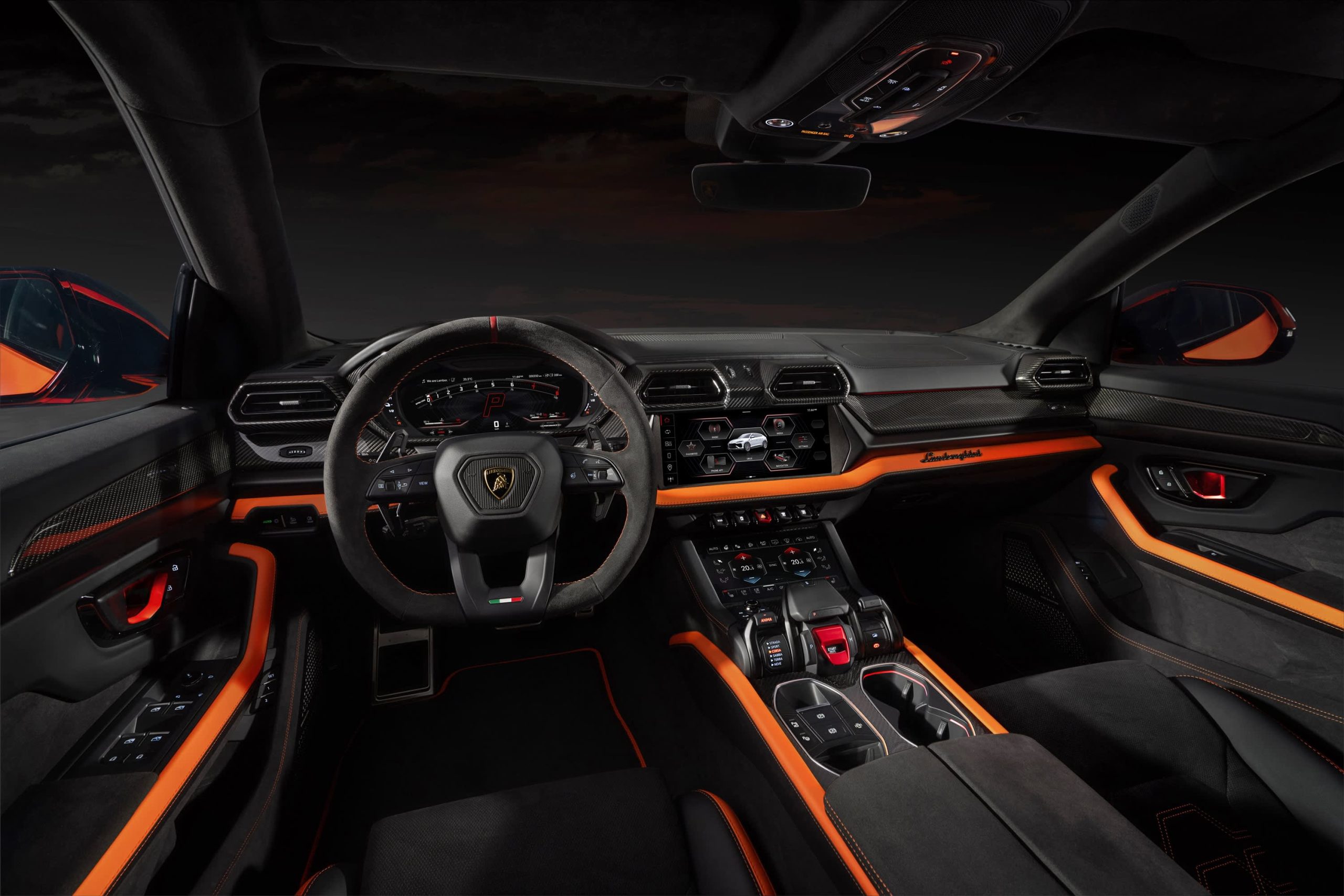
Lamborghini
The Urus SE SUV will sell for US$258,000 in the U.S. (the company’s biggest market) when it goes on sale internationally in the first quarter of 2025, Foschini says.
“We’re using the contribution from the electric motor and battery to not only lower emissions but also to boost performance,” he says. “Next year, all three of our models [the others are the Revuelto, a PHEV from launch, and the continuation of the Huracán] will be available as PHEVs.”
The Euro-spec Urus SE will have a stated 37 miles of electric-only range, thanks to a 192-horsepower electric motor and a 25.9-kilowatt-hour battery, but that distance will probably be less in stricter U.S. federal testing. In electric mode, the SE can reach 81 miles per hour. With the 4-litre 620-horsepower twin-turbo V8 engine engaged, the picture is quite different. With 789 horsepower and 701 pound-feet of torque on tap, the SE—as big as it is—can reach 62 mph in 3.4 seconds and attain 193 mph. It’s marginally faster than the Urus S, but also slightly under the cutting-edge Urus Performante model. Lamborghini says the SE reduces emissions by 80% compared to a standard Urus.
Lamborghini’s Urus plans are a little complicated. The company’s order books are full through 2025, but after that it plans to ditch the S and Performante models and produce only the SE. That’s only for a year, however, because the all-electric Urus should arrive by 2029.
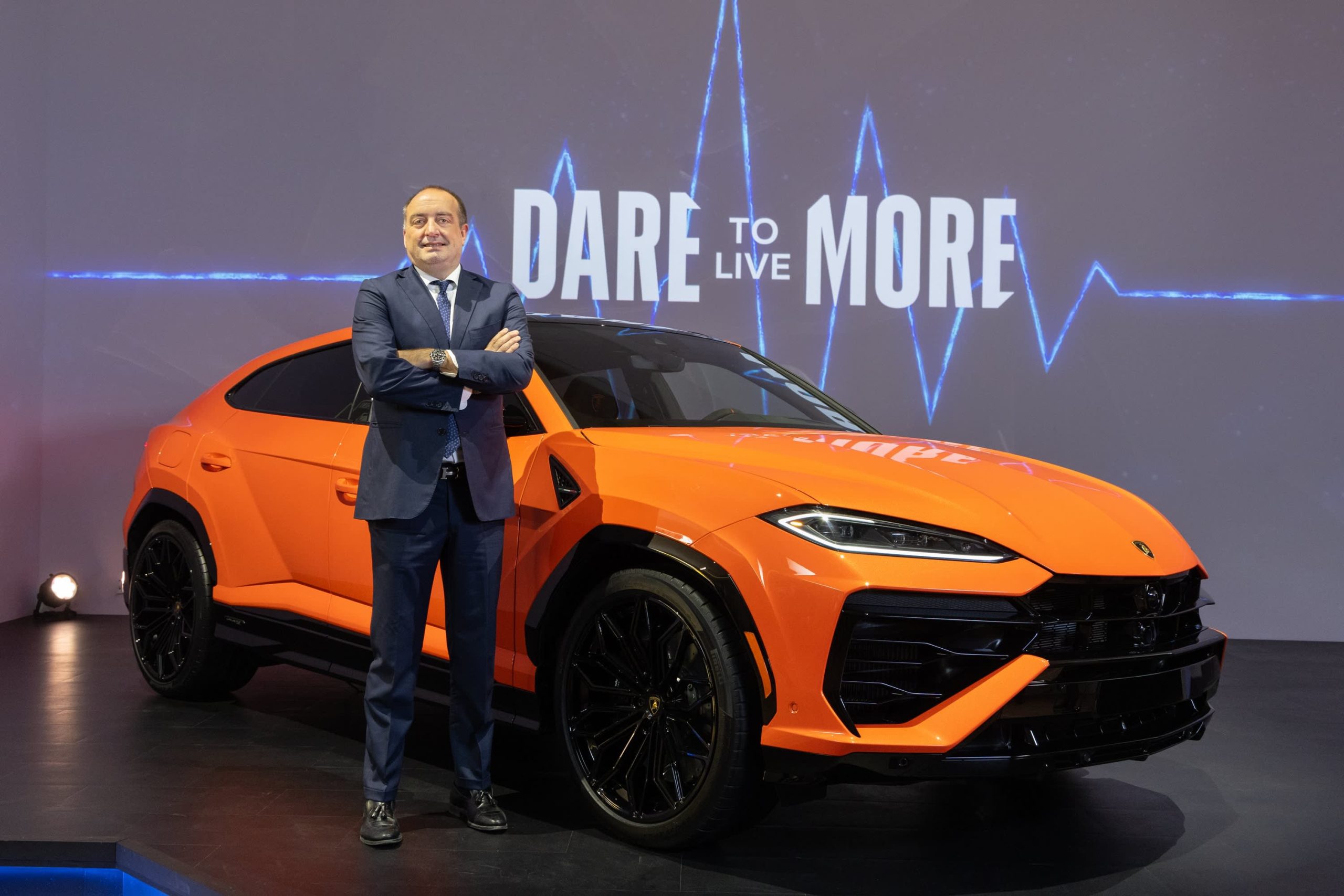
Lamborghini
Thanks to the electric motor, the Urus SE offers all-wheel drive. The motor is situated inside the eight-speed automatic transmission, and it acts as a booster for the V8 but it can also drive the wheels on its own. The electric torque-vectoring system distributes power to the wheels that need it for improved cornering. The Urus SE has six driving modes, with variations that give a total of 11 performance options. There are carbon ceramic brakes front and rear.
To distinguish it, the Urus SE gets a new “floating” hood design and a new grille, headlights with matrix LED technology and a new lighting signature, and a redesigned bumper. There are more than 100 bodywork styling options, and 47 interior color combinations, with four embroidery types. The rear liftgate has also been restyled, with lights that connect the tail light clusters. The rear diffuser was redesigned to give 35% more downforce (compared to the Urus S) and keep the car on the road.
The Urus represents about 60% of U.S. Lamborghini sales, Foschini says, and in the early years 80% of buyers were new to the brand. Now it’s down to 70%because, as Foschini says, some happy Urus owners have upgraded to the Performante model. Lamborghini sold 3,000 cars last year in the U.S., where it has 44 dealers. Global sales were 10,112, the first time the marque went into five figures.
The average Urus buyer is 45 years old, though it’s 10 years younger in China and 10 years older in Japan. Only 10% are women, though that percentage is increasing.
“The customer base is widening, thanks to the broad appeal of the Urus—it’s a very usable car,” Foschini says. “The new buyers are successful in business, appreciate the technology, the performance, the unconventional design, and the fun-to-drive nature of the Urus.”
Maserati has two SUVs in its lineup, the Levante and the smaller Grecale. But Foschini says Lamborghini has no such plans. “A smaller SUV is not consistent with the positioning of our brand,” he says. “It’s not what we need in our portfolio now.”
It’s unclear exactly when Lamborghini will become an all-battery-electric brand. Foschini says that the Italian automaker is working with Volkswagen Group partner Porsche on e-fuel, synthetic and renewably made gasoline that could presumably extend the brand’s internal-combustion identity. But now, e-fuel is very expensive to make as it relies on wind power and captured carbon dioxide.
During Monterey Car Week in 2023, Lamborghini showed the Lanzador , a 2+2 electric concept car with high ground clearance that is headed for production. “This is the right electric vehicle for us,” Foschini says. “And the production version will look better than the concept.” The Lanzador, Lamborghini’s fourth model, should arrive in 2028.
Just 55 minutes from Sydney, make this your creative getaway located in the majestic Hawkesbury region.
Consumers are going to gravitate toward applications powered by the buzzy new technology, analyst Michael Wolf predicts









